Prasanga Samarasinghe
Past, Present, and Future of Spatial Audio and Room Acoustics
Mar 17, 2025Abstract:The study of spatial audio and room acoustics aims to create immersive audio experiences by modeling the physics and psychoacoustics of how sound behaves in space. In the long history of this research area, various key technologies have been developed based both on theoretical advancements and practical innovations. We highlight historical achievements, initiative activities, recent advancements, and future outlooks in the research area of spatial audio recording and reproduction, and room acoustic simulation, modeling, analysis, and control.
A spherical harmonic-domain spatial audio signal enhancement method based on minimum variance distortionless response
Sep 05, 2024Abstract:Spatial audio signal enhancement aims to reduce interfering source contributions while preserving the desired sound field with its spatial cues intact. Existing methods generally rely on impractical assumptions (e.g. no reverberation or accurate estimations of impractical information) or have limited applicability. This paper presents a spherical harmonic (SH)-domain minimum variance distortionless response (MVDR)-based spatial signal enhancer using Relative Harmonic Coefficients (ReHCs) to extract clean SH coefficients from noisy ones in reverberant environments. A simulation study shows the proposed method achieves lower estimation error, higher speech-distortion-ratio (SDR), and comparable noise reduction (NR) within the sweet area in a reverberant environment, compared to a beamforming-and-projection method as the baseline.
Reproducing the Acoustic Velocity Vectors in a Circular Listening Area
Mar 19, 2024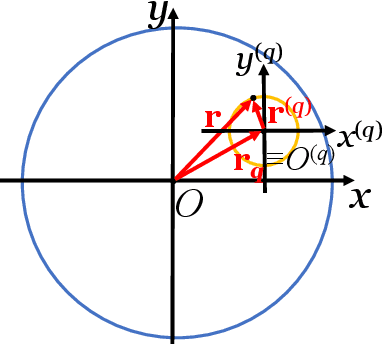
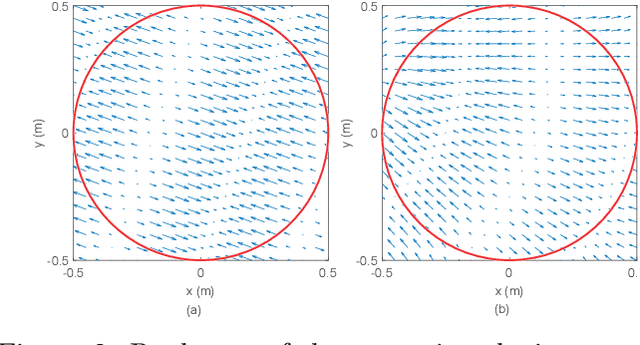
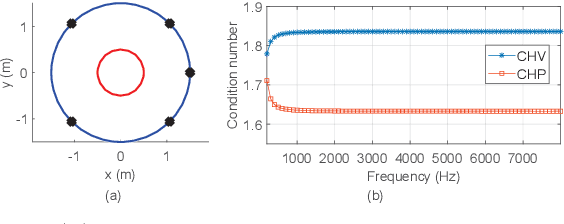
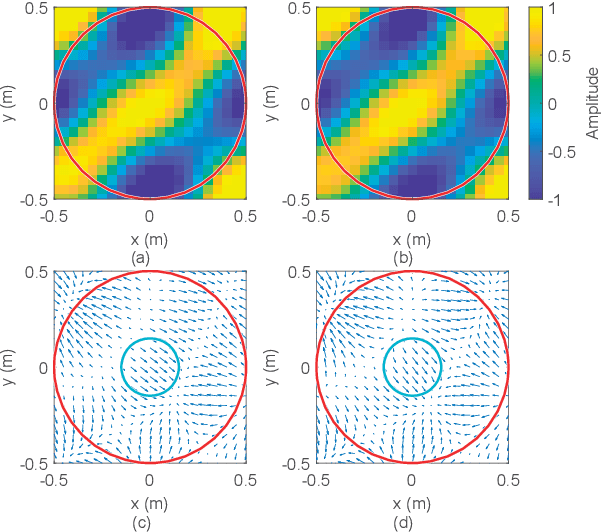
Abstract:Acoustic velocity vectors are important for human's localization of sound at low frequencies. This paper proposes a sound field reproduction algorithm, which matches the acoustic velocity vectors in a circular listening area. In previous work, acoustic velocity vectors are matched either at sweet spots or on the boundary of the listening area. Sweet spots restrict listener's movement, whereas measuring the acoustic velocity vectors on the boundary requires complicated measurement setup. This paper proposes the cylindrical harmonic coefficients of the acoustic velocity vectors in a circular area (CHV coefficients), which are calculated from the cylindrical harmonic coefficients of the global pressure (global CHP coefficients) by using the sound field translation formula. The global CHP coefficients can be measured by a circular microphone array, which can be bought off-the-shelf. By matching the CHV coefficients, the acoustic velocity vectors are reproduced throughout the listening area. Hence, listener's movements are allowed. Simulations show that at low frequency, where the acoustic velocity vectors are the dominant factor for localization, the proposed reproduction method based on the CHV coefficients results in higher accuracy in reproduced acoustic velocity vectors when compared with traditional method based on the global CHP coefficients.
A Two-Step Approach for Narrowband Source Localization in Reverberant Rooms
Sep 25, 2023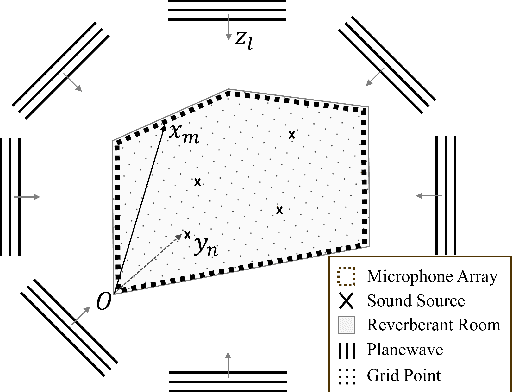
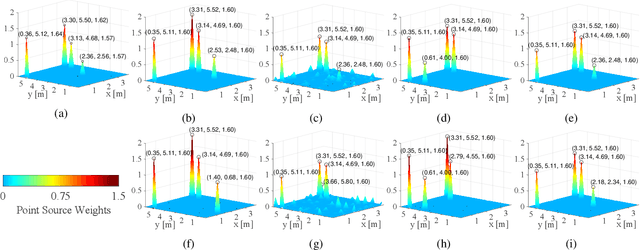
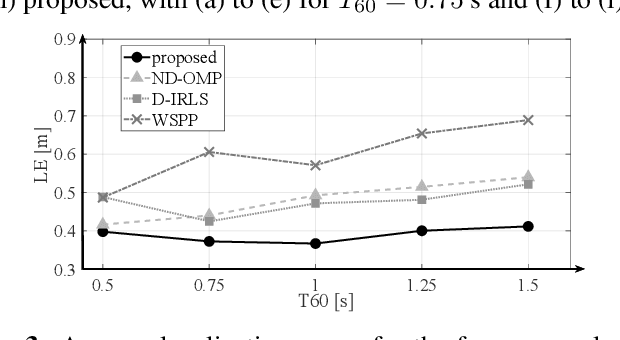
Abstract:This paper presents a two-step approach for narrowband source localization within reverberant rooms. The first step involves dereverberation by modeling the homogeneous component of the sound field by an equivalent decomposition of planewaves using Iteratively Reweighted Least Squares (IRLS), while the second step focuses on source localization by modeling the dereverberated component as a sparse representation of point-source distribution using Orthogonal Matching Pursuit (OMP). The proposed method enhances localization accuracy with fewer measurements, particularly in environments with strong reverberation. A numerical simulation in a conference room scenario, using a uniform microphone array affixed to the wall, demonstrates real-world feasibility. Notably, the proposed method and microphone placement effectively localize sound sources within the 2D-horizontal plane without requiring prior knowledge of boundary conditions and room geometry, making it versatile for application in different room types.
An Active Noise Control System Based on Soundfield Interpolation Using a Physics-informed Neural Network
Sep 19, 2023Abstract:Conventional multiple-point active noise control (ANC) systems require placing error microphones within the region of interest (ROI), inconveniencing users. This paper designs a feasible monitoring microphone arrangement placed outside the ROI, providing a user with more freedom of movement. The soundfield within the ROI is interpolated from the microphone signals using a physics-informed neural network (PINN). PINN exploits the acoustic wave equation to assist soundfield interpolation under a limited number of monitoring microphones, and demonstrates better interpolation performance than the spherical harmonic method in simulations. An ANC system is designed to take advantage of the interpolated signal to reduce noise signal within the ROI. The PINN-assisted ANC system reduces noise more than that of the multiple-point ANC system in simulations.
Sound Field Estimation around a Rigid Sphere with Physics-informed Neural Network
Jul 26, 2023Abstract:Accurate estimation of the sound field around a rigid sphere necessitates adequate sampling on the sphere, which may not always be possible. To overcome this challenge, this paper proposes a method for sound field estimation based on a physics-informed neural network. This approach integrates physical knowledge into the architecture and training process of the network. In contrast to other learning-based methods, the proposed method incorporates additional constraints derived from the Helmholtz equation and the zero radial velocity condition on the rigid sphere. Consequently, it can generate physically feasible estimations without requiring a large dataset. In contrast to the spherical harmonic-based method, the proposed approach has better fitting abilities and circumvents the ill condition caused by truncation. Simulation results demonstrate the effectiveness of the proposed method in achieving accurate sound field estimations from limited measurements, outperforming the spherical harmonic method and plane-wave decomposition method.
Reproducing the Velocity Vectors in the Listening Region
Jul 14, 2023Abstract:This paper proposes a sound field reproduction algorithm based on matching the velocity vectors in a spherical listening region. Using the concept of sound field translation, the spherical harmonic coefficients of the velocity vectors in a spherical region are derived from the desired pressure distribution. The desired pressure distribution can either correspond to sources such as plane waves and point sources, or be obtained from measurements using a spherical microphone array. Unlike previous work in which the velocity vectors are only controlled on the boundary of the listening region or at discrete sweet spots, this work directly manipulates the velocity vectors in the whole listening region, which is expected to improve the perception of the desired sound field at low frequencies.
Time-Domain Wideband ISM for Spherical Microphone Arrays
Jun 15, 2023Abstract:This paper presents the time-domain wideband spherical microphone array impulse response generator (TDW-SMIR generator), which is a time-domain wideband image source method (ISM) for generating the room impulse responses captured by an open spherical microphone array. To incorporate loudspeaker directivity, the TDW-SMIR generator considers a source that emits a sequence of spherical wave fronts whose amplitudes are related to the loudspeaker directional impulse responses measured in the far-field. The TDW-SMIR generator uses geometric models to derive the time-domain signals recorded by the spherical microphone array. Comparisons are made with frequency-domain single band ISMs. Simulation results prove the results of the TDW-SMIR generator are similar to those of frequency-domain single band ISMs.
 Add to Chrome
Add to Chrome Add to Firefox
Add to Firefox Add to Edge
Add to Edge